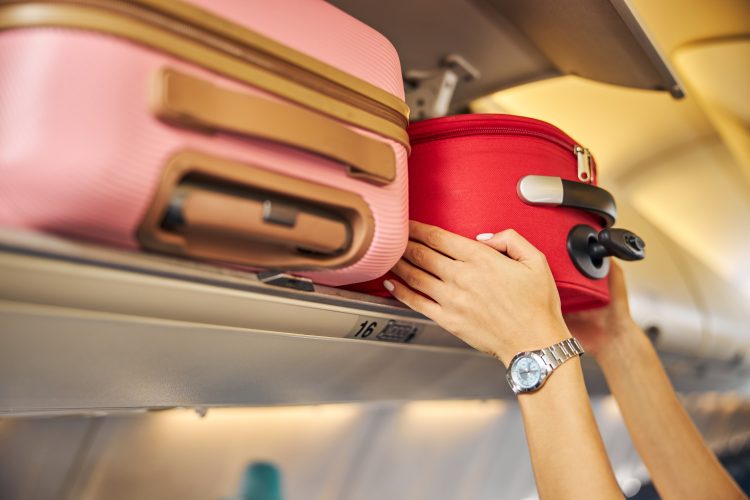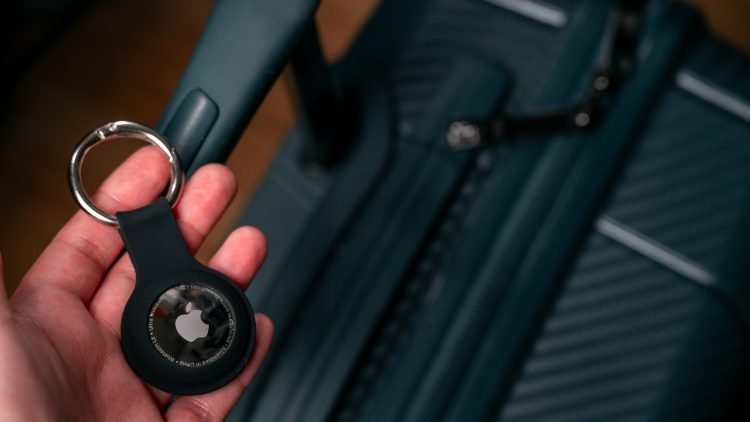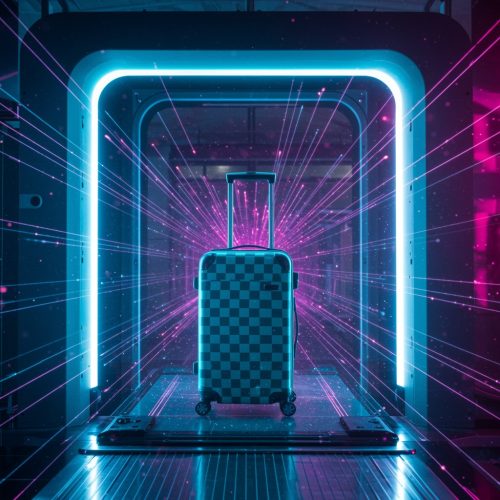Baggage trends shaping the aviation industry
Posted: 12 March 2025 | Holly Miles | No comments yet
International Airport Review outlines the key trends driving modern airport baggage handling, such as automation, advanced technology integration, and sustainability initiatives.


In air travel, efficient baggage handling stands as a linchpin for ensuring seamless journeys and satisfied passengers. According to SITA’s Baggage IT insights 2023 report, after more than a decade of reduction in mishandled bags, the global mishandling rate surged to 7.6 bags per thousand passengers in 2022 which was 74.7% more than 2021. According to the newest report from SITA Baggage Insights Report 2024, the global mishandled bag rate (MBR) has dropped 63% since 2007 which is a fantastic improvement for the industry. However, as passenger numbers continue to grow, so too will the volume of mishandled bags. Within the past year alone the MBR improved by 9%, but this still represents over 10 million pieces of luggage that were delayed, mislaid, misdirected or stolen. As the latest report rightly points out, the average passenger checks 1.2 bags. An extra 1 billion people flew last year which meant that the industry mishandled 10 million more bags. What happens when passenger numbers rise by another 5 billion by 2040?
Lost luggage leads to bad press with global headlines and passenger stories being highlighted in the tabloid newspapers.
Baggage handling is still done largely in the same way as it was decades ago and has not modernised at the same pace as other industries, like manufacturing for example. The baggage sector is ripe for change, investment and technological innovation. The evolution is primarily propelled by technological advancements, shifting consumer expectations, and an unwavering commitment to heightened security measures. In this article, we examine the baggage trends shaping the aviation industry.
Join our free webinar: Revolutionising India’s travel experience through the Digi Yatra biometric programme.
Air travel is booming, and airports worldwide need to move passengers faster and more efficiently. Join the Digi Yatra Foundation and IDEMIA to discover how this groundbreaking initiative has already enabled over 60 million seamless domestic journeys using biometric identity management.
Date: 16 Dec | Time: 09:00 GMT
rEGISTER NOW TO SECURE YOUR SPOT
Can’t attend live? No worries – register to receive the recording post-event.
Staff shortages
The aviation industry is currently facing a significant shortage in airport ground handling personnel, posing challenges for airports worldwide. The shortage is driven by several factors, including the Great Resignation due to the COVID-19 pandemic as well as many ground handlers laying off their staff and being unable to entice them back to the role; increased demand for air travel; high turnover rates and a lack of qualified candidates entering the workforce.
As passenger numbers continue to rise, airports are struggling to meet growing demand for baggage handling services, leading to longer wait times, increased risk of mishandled luggage, and operational inefficiencies. Addressing this shortage requires concerted efforts from airports and airlines to attract and retain skilled baggage handling personnel through competitive wages, comprehensive training programmes, and leveraging new technologies that can improve job satisfaction, safety and therefore retention rates.
Failure to address the industry shortage in airport baggage handling will have adverse effects on passenger experience and overall airport operations.
Increased carry-on luggage
One trend that airlines are observing is that passengers are getting carried away with carry-on luggage, this can be due to a number of factors, such as the cost of checking in luggage, not wanting to wait at the baggage carousel to retrieve their bag and also mistrust of the airlines handling their luggage.
The situation of not being able to store your suitcase in the overhead locker above your seat, and having to store it further down is a familiar one. However, this impedes other passengers, delays boarding and deplaning and results in unhappy travellers. Delays can occur because of this as airline crew are also engaged in playing Tetris with bags in the overhead lockers and this creates a domino effect leading to delays to other flights sharing the same gates.
Baggage biometrics
One new and innovative solution being developed is baggage biometrics. So, what is baggage biometrics? Just like facial recognition, high-resolution cameras take images of the checked bag from lots of different angles once it has been checked in. These images are used to build a unique identity of the bag. The latest technologies used in this process are said to be very mature and are able to distinguish subtle blemishes and small dents to the bag. It is also said to be able to tell the difference between two new bags from the same brand.
Automation and robotics
One of the foremost trends revolutionising baggage handling is automation. Airports worldwide are investing in sophisticated automated systems designed to streamline processes and minimise errors. Robotic assistance has emerged as a cornerstone of this automation revolution, with robots playing pivotal roles in tasks such as baggage sorting, transportation, and loading. An example of this is British Airways who will begin using self-driving robot baggage carriers called Auto-DollyTugs at London Gatwick Airport, trials are also running at Cincinnati/Northern Kentucky International Airport (CVG).
To lighten the workload for baggage handling employees, Eindhoven Airport has also invested in lifting aids that aim to reduce strain and increase the safety and wellbeing for handlers.
By reducing manual intervention and human error, automated baggage handling systems enhance operational efficiency, shorten turnaround times, and ultimately improve the overall passenger experience.
Tracking technology


Caption: Decreasing trust in airlines has led to passengers taking matters into their own hands and securing electronic bag tags such as AirTags to their luggage.
Where’s my bag? A common question asked by passengers as they wait anxiously by the baggage carousel. The International Air Transportation Association (IATA) Resolution 753 has made it mandatory for all airline members to track customers’ luggage at four mandatory points throughout the baggage journey, yet despite this, the rate of mishandled bags has continued to rise marring the reputation of airlines and airports.
In order to improve passenger trust in baggage handling, there is now widespread adoption of RFID (radio-frequency identification) and Bluetooth technology for baggage tracking. RFID tags enable real-time monitoring of luggage throughout its journey, providing airlines and passengers with unprecedented visibility into baggage movements. This enhanced tracking capability significantly reduces the incidence of lost or mishandled luggage, facilitating quicker issue resolution and enhancing passenger satisfaction.
Airlines are leveraging RFID technology to integrate baggage tracking capabilities into their mobile apps, empowering passengers with greater control and peace of mind over their belongings, for example, Lufthansa accepts and supports bag tags from BAGTAG and BagsID suppliers, as well as electronic bag tags integrated with some RIMOWA luggage models. However, some passengers also choose to track their own belongings using Bluetooth devices, because they do not trust that the airline will deliver their luggage back to them.
Artificial intelligence
The integration of artificial intelligence (AI) and machine learning algorithms represents another key trend in modern baggage handling. These technologies enable airports to analyse historical data and predict baggage flow patterns, allowing for optimised resource allocation and more efficient handling processes.
AI-powered screening algorithms enhance the accuracy of baggage screening processes, augmenting security measures while expediting the flow of luggage through checkpoints. Additionally, AI enables dynamic adjustments to baggage handling operations in response to changing conditions, which minimises delays and disruptions.
Smart security
Advanced security screening technologies have also emerged as a focal point in modern baggage handling. Computed tomography (CT) scanning systems, in particular, have revolutionised baggage screening by providing detailed 3D images of luggage contents for enhanced threat detection. These systems reduce the need for manual bag inspections, and for allow passengers to keep their liquids and electronics from their luggage, therefore expediting the screening process and enhancing overall security.
Airports such as Berlin Brandenburg, Aberdeen, London City, Milan Linate and Tallinn investing in CT scanning technology to comply with stringent regulatory requirements while maintaining operational efficiency. In the UK, the government requires all UK airports to install this new technology and has recently extended the deadline to June 2024.
Self-service technology
Self-service bag-drop facilities are becoming increasingly prevalent in airports, offering passengers a convenient alternative to traditional check-in processes. These self-service kiosks empower passengers to check in their luggage independently, reducing queuing times and enhancing the overall check-in experience. By automating the bag drop process, airports can reallocate staff to other tasks, thereby optimising resource utilisation and improving service efficiency. Some self-service bag drop facilities incorporate biometric authentication – as Spirit Airlines have done at Hartsfield-Jackson Atlanta Airport – further enhancing security while expediting the check-in process for passengers.
Mobile apps
Mobile apps and digital platforms have become integral components of modern baggage handling, offering passengers real-time updates on flight status, baggage information, and relevant travel alerts. These digital solutions enable passengers to report lost or damaged baggage, track the status of baggage claims, and provide feedback on their travel experience, fostering greater transparency and accountability.
One example of an airline already doing this is Lufthansa. Lufthansa sends a baggage receipt to passengers once they have checked in their luggage and allows them to track their bag throughout the journey. Passengers are also informed which baggage carousel the bag will be arriving at and are able to launch a missing luggage claim from the app.
Airlines leverage mobile apps to offer personalised recommendations, exclusive offers, and tailored services, enhancing passenger loyalty and satisfaction.
Sustainability
Sustainability initiatives are increasingly shaping baggage handling practices, reflecting a broader commitment within the aviation industry to environmental stewardship. Airports are adopting eco-friendly practices, such as using recyclable materials for baggage tags and packaging and implementing energy-efficient technologies in handling systems.
By optimising baggage routing and adopting eco-friendly initiatives, airports aim to minimise their carbon footprint and contribute to environmental conservation efforts. The pursuit of sustainable solutions in baggage handling underscores the industry’s dedication to responsible business practices.
In conclusion, the evolution of airport baggage handling reflects a convergence of technological innovation, operational efficiency, and customer-centricity. From automation and advanced technology integration to enhanced security measures and sustainability initiatives, the key baggage trends shaping the aviation industry are driven by a relentless pursuit of efficiency, security, and sustainability. As airports continue to embrace these transformative trends, passengers can expect smoother journeys, enhanced security measures, and a more seamless travel experience overall.
Join our free webinar: Revolutionising India’s travel experience through the Digi Yatra biometric programme.
Air travel is booming, and airports worldwide need to move passengers faster and more efficiently. Join the Digi Yatra Foundation and IDEMIA to discover how this groundbreaking initiative has already enabled over 60 million seamless domestic journeys using biometric identity management.
Date: 16 Dec | Time: 09:00 GMT
rEGISTER NOW TO SECURE YOUR SPOT
Can’t attend live? No worries – register to receive the recording post-event.



















